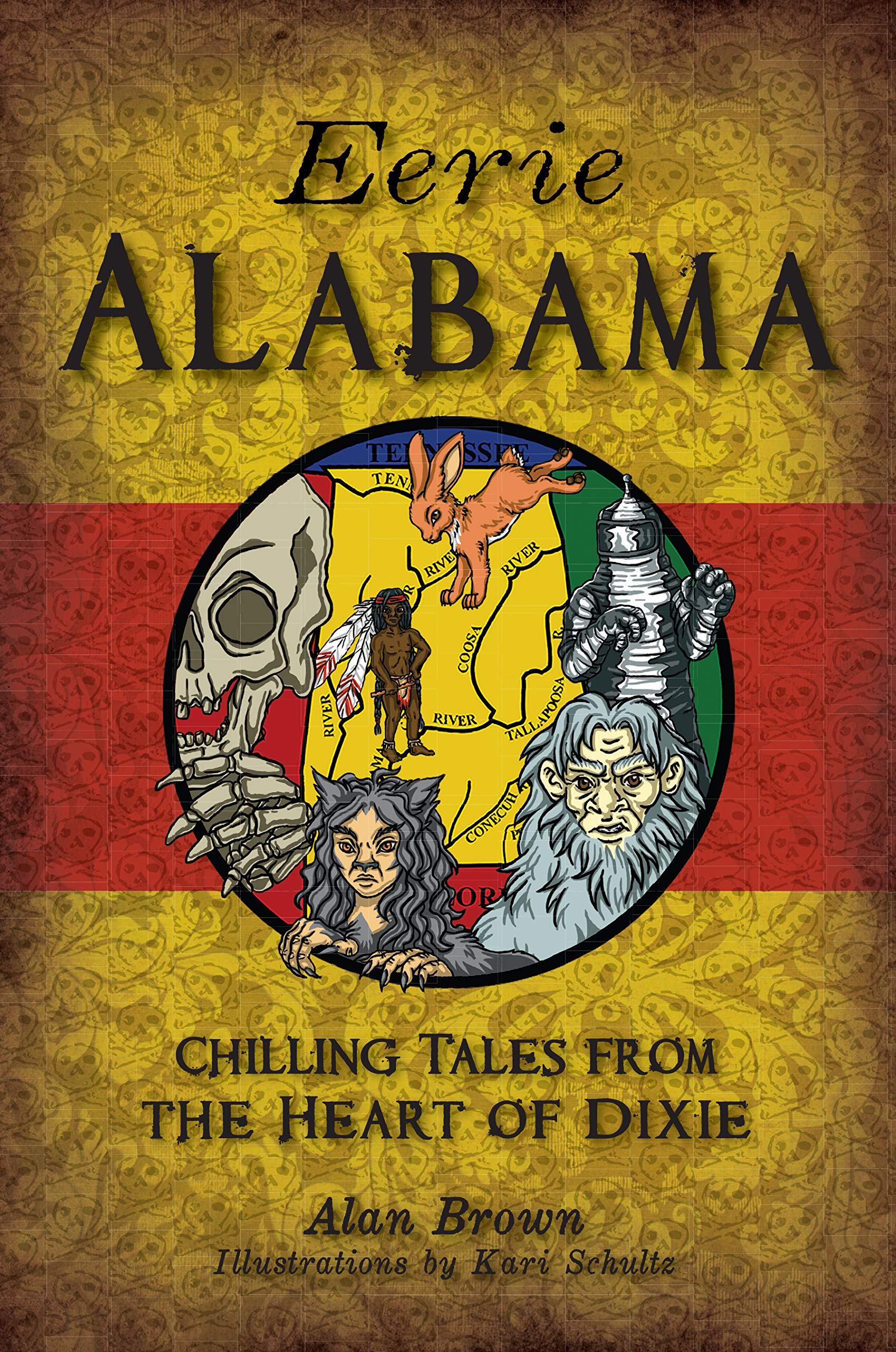In his book Beyond the Grave, author Troy Taylor provides an account of one of Kentucky’s most bizarre legends. Late one afternoon after a hard day’s work, Carl Pruitt came home, expecting to find his wife in the kitchen cooking supper. He sensed that something was wrong when she did not answer his greeting from the kitchen, so he began to search for her. When Carl opened the door to the bedroom, he was shocked to find is wife in bed with another man. Blind with rage, Carl grabbed a steel chain and began to strangle his wife with it while her lover wisely darted through the bedroom and out the front door. Realizing what he had done after his wife stopped breathing, Carl committed suicide. According to local folklore, Carl’s wrath never abated, not even after death.
Because his wife’s family was unable to forgive Carl, he as buried in a different cemetery and a different town. A week after his burial, people noticed a circular discoloration on his tombstone. Over the next few weeks, a series of interlocking circles appeared on the tombstone. The more superstitious visitors to the cemetery pointed out the circle’s resemblance to the links of a chain. Soon, another row of circles intersected with the previous row, forming a cross. Even though there was talk about removjng the mysterious tombstone, it was left where it was.
The possibility that Carl Puritt’s tombstone was cursed became more accepted by the community following what appeared at first to be a freak accident. A month after the chain had stopped “growing,” several boys rode their bikes out to the cemetery to get a look at the “bewitched” tombstone. To impress his friends, one of them threw a rock at Carl Pruitt’s tombstone, breaking off a small chip. Satisfied that he had proven his manhood, he and the other boys mounted their bikes and rode toward home. Suddenly, the boy who had damaged the tombstone lost control of his bike and crashed into a tree. Somehow, the bike’s sprocket chain came loose and wrapped around the boy’s neck, strangling him.
A few weeks after the accident, the dead boy’s mother strode into the cemetery with an ax. Unable to pin the blame for her son’s death on a living human being, she decided to take vengeance on Carl Pruitt’s “cursed” tombstone. The next day, she was hanging clothes on the clothesline in her back yard when somehow, the clothesline detached itself from one of the two posts and strangled her. Afterwards, her neighbors gathered in small groups on street corners and in the local café and whispered to each other that Carl Pruitt’s tombstone had claimed another victim. They also thought it strange that the woman had done not damage to the tombstone, even though the badly dented ax was covered in rock dust.
One of the people who heard about the dead woman’s fate was a farmer. He was driving three members of his family past the cemetery in a wagon when, in a show of bravado, he produced a pistol from his coat and began shooting in the direction of Carl Pruitt’s tombstone. The percussion of the pistol and spray of flying chips of granite spooked the horses. As the horses gained speed, the farmer’s family members jumped off, but he continued holding onto the reins in a vain attempt to slow the wagon down. As the runaway wagon rounded a sharp curve, the farmer toppled forward in his seat and fell into the trace chains, one of which wrapped itself around his neck and strangled him. Once again, there was no evidence of any damage to Carl Pruitt’s tombstone.
Following this incident, a number of people pressured their congressman to do something about the murderous tombstone. Not long thereafter, two policemen were dispatched to the cemetery. Convinced that the stories about the tombstone were nonsense, the policeman chuckled to themselves as they took photographs in the vicinity of Carl Pruitt’s grave. They were still laughing when they climbed into their squad car and drove in the direction of the town. All at once, one of the policemen glanced in the rearview mirror and observed a ball of light flying out of the cemetery in their direction. Terrified, the driver accelerated, but the ball of light kept coming. After a couple of minutes, the car swerved off the road and crashed between two posts. The policeman riding in the passenger seat was thrown clear of the car, and he began looking for his partner. He found his mutilated body lying on the ground. Piecing the evidence together, the policeman realized that the chain between the two posts had smashed the windshield of the car and nearly decapitated his partner.
By the 1940s, most people in area avoided the cemetery altogether because of the evil reputation it had acquired from Carl Pruitt’s tombstone. Nevertheless, another local man decided to defy the curse of Carl Pruitt’s tombstone. One night, he ventured into the cemetery with hammer in hand. He marched up to Carl Pruitt’s grave and proceeded to pound away at his tombstone, breaking off large chunks of stone. The hammering was so loud that it could be heard by people living nearby. They chose to ignore the noise until the sounds of the hammering were replaced by a blood-curdling scream. A party of men holding lanterns ran to the cemetery. What they saw froze their blood. Apparently, the man became so frightened by something that he ran to the entrance and caught his neck in the long chain used to lock the gate. Like the other people foolish enough to attack the tombstone, he was choked to death. The men were not surprised to find that the man had suffered much more damage than Carl Puritt’s tombstone did.
The last death that was attributed to Carl Pruitt’s tombstone spelled the end of the cemetery. Not only did burials at the cemetery cease abruptly, but people even began exhuming their loved ones. By the 1950s, the only grave that remained was Carl Pruitt’s. In 1958, the site of the former cemetery—and Carl Pruitt’s grave—was destroyed by a strip-mining operation. All that remains is the legend of Carl Pruitt’s vengeful tombstone.



Recent Comments